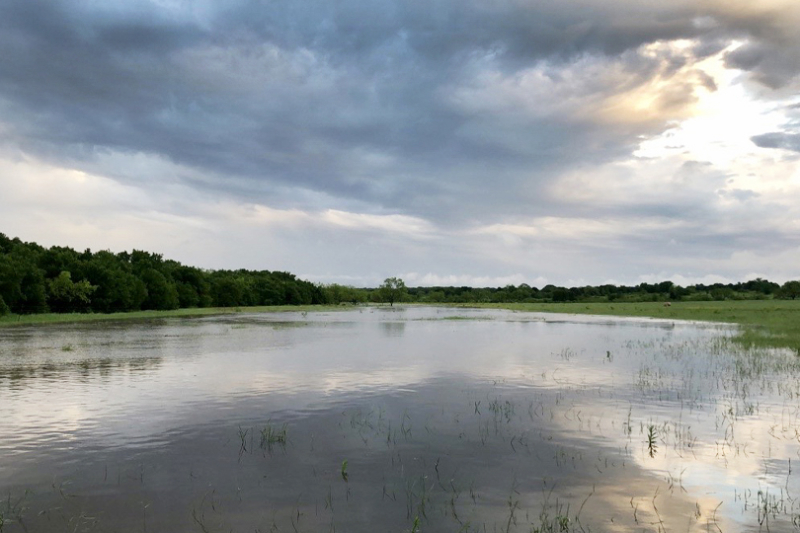By Julie Tomascik
Editor
The last two weeks have brought rain, and lots of it, to parts of North, Central and East Texas.
The back-to-back storms fell on heavily saturated soil, which meant the water wasn’t absorbed and instead flooded.
It’s a stark contrast to the consecutive years of drought the state has faced.
“April and May are usually wet months for Texas, but we’ve been hit with such severe drought over the last two years that I think we forgot how wet it can get,” said Tracy Tomascik, Texas Farm Bureau associate director of Commodity and Regulatory Activities. “These storms brought a substantial amount of rain, leading to creeks, rivers, lakes and streams overflowing and causing flooding issues.”
Tomascik noted farmers and ranchers should be mindful of the risks that cattle face if they have been exposed to flooded pastures or low-lying areas.
“You want to check for any missing livestock, but you also want to monitor their health,” he said. “Contaminated feed or stagnant water can cause issues you don’t experience routinely.”
It’s important to check for damaged gates and fences, as well as eroded creek beds.
Removing objects and debris that washed up with flood waters is also necessary.
“That’s important for the health of livestock, and it protects you and your machinery from injury or damage when you drive over those objects later in the year that are then hidden under grass.”
There are also long-term impacts to consider.
“Be on the lookout for foot rot or leptospirosis, among other issues, that occur when cattle are exposed to wet conditions for long periods of time,” Tomascik said.
He recommends working with a veterinarian to determine a treatment plan.
Biting pests will likely be an issue, especially around low-lying areas.
“It’s hard to be mad about rainfall after years of drought, although I know we wish we could save some of this for the summer months,” Tomascik said.
Hay season was already underway for the areas hit by significant rainfall. It will take time for fields and pastures to dry out and delay some plans for cutting hay.
“The coming weeks will be extremely difficult for the impacted farmers and ranchers, but things don’t grow without water,” Tomascik said. “At least the parched Texas soils will have a chance to rebound and move into the summer months with some sub-soil moisture.”


Leave A Comment